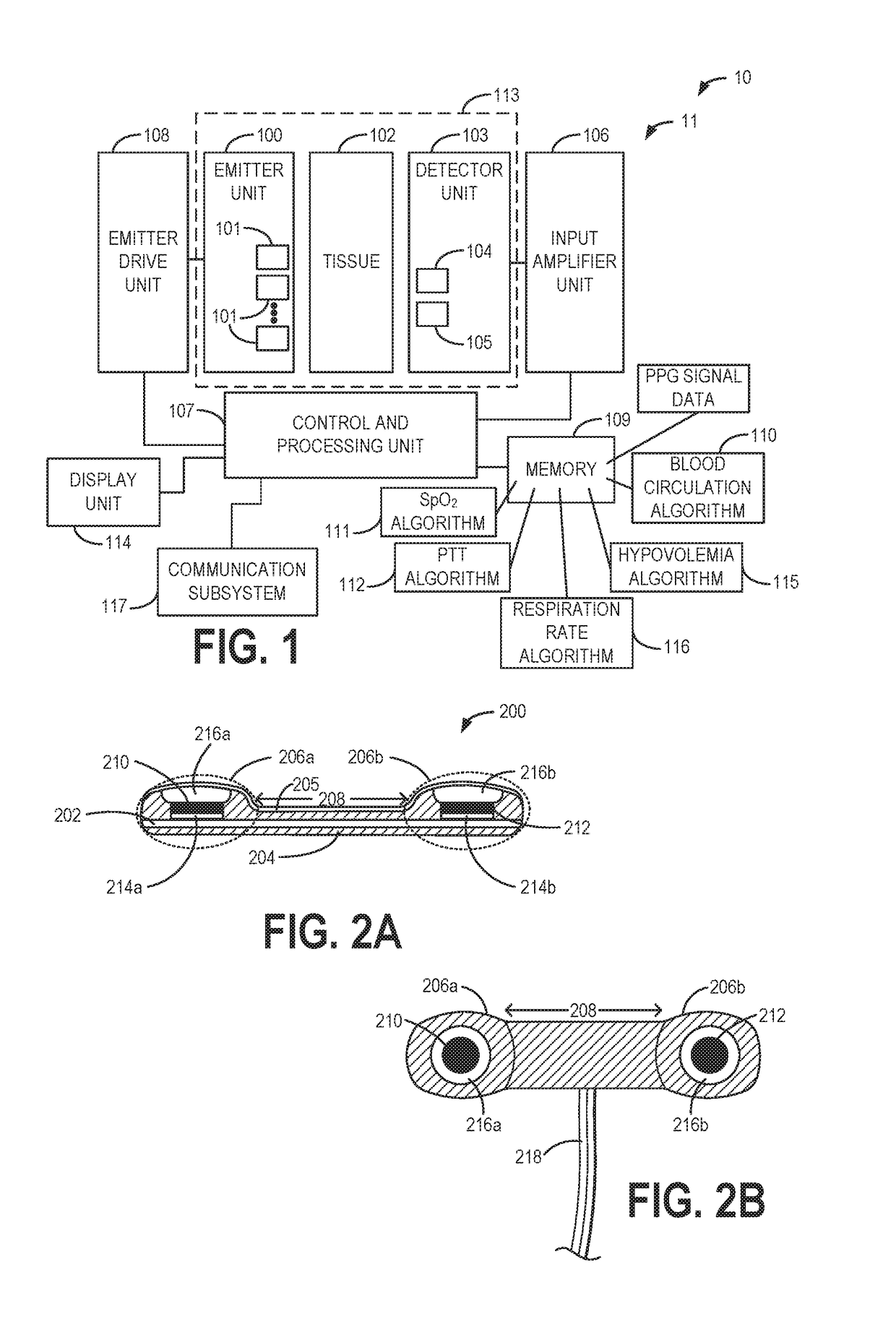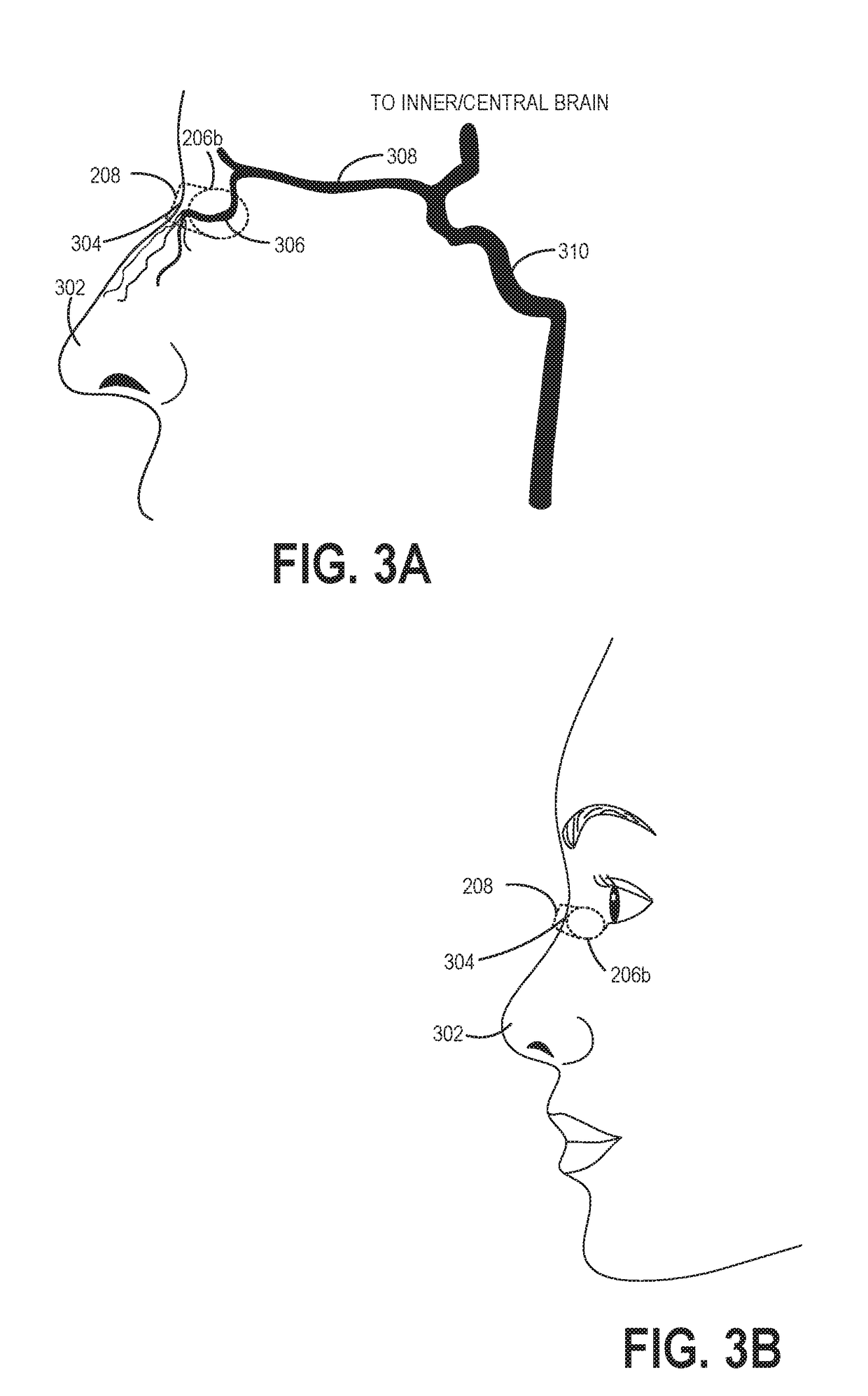Pulse oximetry sensors and methods
a pulse oximeter and pulse oximeter technology, applied in the field of biological probes, sensors, methods, etc., can solve the problem of insufficient pulse amplitude for a pulse oximeter to reliably measure blood or blood circulation characteristics
- Summary
- Abstract
- Description
- Claims
- Application Information
AI Technical Summary
Benefits of technology
Problems solved by technology
Method used
Image
Examples
first embodiment
[0043]Turning now to FIG. 4, a partial front view of a face of a subject wearing a nasal pulse oximetry probe 400 is shown. The center of the root of the nasal bridge is indicated at 402. The exact location of the center of the root of the nasal bridge 402 may vary for each patient. In the example of FIG. 4, the center of the root of the nasal bridge 402 is level with the bottom of the eye, as indicated by dashed line 404. However, in other examples, the center of the root of the nasal bridge 402 may be higher than dashed line 404 (e.g., more toward the eyebrows) or lower than dashed line 404 (e.g., more toward the lips). For example, the center of the root of the nasal bridge may lie along a central axis of the eyes (e.g., an axis that passes through the caruncula lacrimalis of each eye).
[0044]Bridge portion 408 of the nasal pulse oximetry probe (e.g., probe 200 of FIG. 2A) is shaped to be centered on the center of the root of the nasal bridge 402. In one example, the probe may inc...
second embodiment
[0046]Turning now to FIG. 5, a partial front view of a face of a subject wearing a nasal pulse oximetry probe 500 is shown. Like components of FIGS. 4 and 5 are numbered similarly (e.g., 408 corresponds to 508). Whereas the nasal pulse oximetry probe of FIG. 4 may be attached to the patient with adhesive, the probe of FIG. 5 additionally or alternatively includes an attachment mechanism in the form of an eyeglass-type frame 510, which rests on ears 516 of the patient. The size and shape of frame 510 may vary. For example, frame 510 may be manufactured at different sizes and configurations to accommodate different types of patients (e.g., neonates, infants, pediatrics, and adults). In particular, the width of frame 510 may vary to accommodate patients with different head widths. The mechanisms for adjusting the probe widths may be part of the frame, which makes one frame suitable for broad range of head widths. Regardless of the size or shape of the frame 510, the frame 510 is config...
PUM
 Login to View More
Login to View More Abstract
Description
Claims
Application Information
 Login to View More
Login to View More - R&D
- Intellectual Property
- Life Sciences
- Materials
- Tech Scout
- Unparalleled Data Quality
- Higher Quality Content
- 60% Fewer Hallucinations
Browse by: Latest US Patents, China's latest patents, Technical Efficacy Thesaurus, Application Domain, Technology Topic, Popular Technical Reports.
© 2025 PatSnap. All rights reserved.Legal|Privacy policy|Modern Slavery Act Transparency Statement|Sitemap|About US| Contact US: help@patsnap.com



